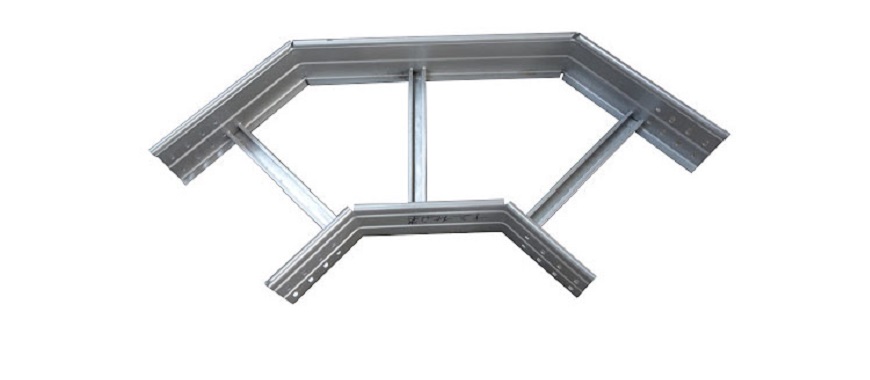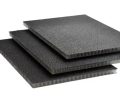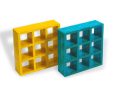
An EMI cable tray is a specialized solution designed to shield sensitive cables from electromagnetic interference. This type of cable tray is used in environments where protection from interference is critical, such as industrial facilities and data centers. It helps ensure the stable performance of instrumentation and communication systems by reducing the effects of external electromagnetic signals. Sensitive cables, like those used for data transfer and power distribution, can be disrupted by EMI, leading to operational issues. By using an EMI cable tray, cables are safeguarded within a secure and durable enclosure. This shielding capability makes EMI cable trays essential for maintaining the integrity of signal transmissions in demanding applications across various industries.
Key Features of EMI Cable Trays
Design and Structure of EMI Cable Tray
EMI cable trays are designed to provide superior protection for shielded cable trays, ensuring that sensitive cables are secure and shielded from external interference. The solid bottom structure minimizes electromagnetic interference, creating a stable environment for signal transmission. Flat flanged covers enhance the durability and shielding capacity, reducing the chances of signal disruption caused by external electromagnetic fields.
To further strengthen the protective capabilities, wrap-around splices and cover splices are integrated into the design. These components ensure seamless protection at connection points, preventing any leakage of electromagnetic interference. This design feature makes EMI cable trays ideal for environments where stable communication and electrical systems are required.
By utilizing an EMI cable tray, shielded cable trays benefit from enhanced structural integrity and operational stability. This ensures that sensitive instrumentation and communication cables maintain their functionality in demanding industrial and commercial settings.
Material Options for EMI Cable Tray
The material of an EMI cable tray plays a significant role in its shielding effectiveness and durability. Commonly, these trays are crafted from steel, aluminum, or stainless steel. Each material provides unique benefits tailored to specific operational needs.
Steel offers high strength and affordability, making it a preferred choice for heavy-duty applications. Aluminum provides a lightweight alternative with excellent corrosion resistance, suitable for environments where weight reduction is critical. Stainless steel, known for its exceptional resistance to corrosion and extreme conditions, is often selected for demanding industrial uses.
To enhance durability, EMI cable trays are available in finishes such as hot-dip galvanized, pre-galvanized, and painted options. These finishes improve the corrosion resistance of shielded cable trays, extending their service life in harsh environments. Selecting the right material and finish ensures that the EMI cable tray meets the operational requirements while maintaining its protective capabilities.
Standards Compliance of EMI Cable Tray
Compliance with industry standards is a critical factor in ensuring the reliability of EMI cable trays and shielded cable trays. These trays are typically designed and tested according to NEMA VE-1 and related standards, which define performance and manufacturing benchmarks.
By adhering to these guidelines, EMI cable trays are engineered to meet safety, durability, and electromagnetic interference reduction criteria. Installation practices often align with NEMA VE-2 standards, providing clear instructions to maintain performance during setup. Proper compliance ensures that shielded cable trays achieve optimal shielding performance while meeting regulatory requirements.
For businesses like GangLong Fiberglass, standards compliance demonstrates a commitment to delivering reliable and high-quality EMI cable tray solutions. This approach guarantees that the trays can be trusted for use in critical applications, including telecommunications, healthcare, and industrial facilities, where EMI protection is essential.
Benefits of EMI Cable Trays
Electromagnetic Interference Protection of EMI Cable Tray
An EMI cable tray offers exceptional electromagnetic interference protection, making it essential for environments with sensitive instrumentation and communication cables. The primary benefit lies in its ability to shield cables from external electromagnetic fields, which can cause signal disruption, data loss, or equipment malfunction.
By incorporating cable tray EMI shielding, the trays act as a barrier that minimizes the impact of external noise. This shielding ensures stable signal transmission, particularly in facilities with high electromagnetic interference levels, such as power plants and data centers. The consistent performance of sensitive cables is critical for maintaining the reliability of industrial and commercial systems.
GangLong Fiberglass emphasizes the importance of using EMI cable trays for operations that demand uninterrupted communication and precise data processing. The use of cable tray EMI shielding safeguards vital infrastructure, ensuring efficiency and reducing the risk of operational delays caused by interference.
Durability and Strength of EMI Cable Tray
EMI cable trays are constructed with high-strength materials to provide long-term reliability in demanding environments. Their robust design ensures that the trays can support the weight of bundled cables without deformation or failure.
Cable tray EMI shielding is enhanced by the solid construction, which also offers resistance to physical damage. This feature is crucial in industrial facilities where equipment is frequently subjected to mechanical stress. The high-strength construction not only protects the cables but also maintains the integrity of the shielding layer.
GangLong Fiberglass utilizes durable materials like steel, aluminum, and stainless steel to manufacture EMI cable trays. These materials ensure that the trays can handle heavy loads, remain resistant to external impacts, and perform consistently over time. The durability of the tray reduces maintenance costs, making it a cost-effective solution for cable management.
Corrosion Resistance of EMI Cable Tray
The corrosion resistance of an EMI cable tray is critical for maintaining its functionality in harsh environments. Corrosion can compromise the effectiveness of cable tray EMI shielding, leading to potential exposure of sensitive cables to electromagnetic interference.
EMI cable trays are designed with protective finishes such as hot-dip galvanized, pre-galvanized, or painted coatings. These finishes create a barrier against moisture, chemicals, and other corrosive elements. This resistance is particularly important in industries like marine, chemical processing, and outdoor installations where environmental factors pose significant challenges.
GangLong Fiberglass focuses on offering high-quality finishes that extend the lifespan of their EMI cable trays. By choosing materials and coatings that resist corrosion, users can ensure that cable tray EMI shielding remains effective, even in the most demanding environments. This feature makes EMI cable trays a reliable choice for protecting sensitive cables over extended periods.
Separator Cable Tray: Enhancing Cable Organization and Safety
Applications of EMI Cable Trays
Industrial and Commercial Use Cases for EMI Cable Tray
EMI cable trays are widely used in industrial and commercial environments where electromagnetic interference shielding is crucial. These trays play a vital role in ensuring the uninterrupted functionality of sensitive cables in high-EMI zones.
In power plants, EMI cable trays protect control and instrumentation cables from interference caused by heavy electrical equipment. Data centers also rely on EMI cable trays to shield high-density communication cables, preventing signal loss and maintaining network performance. Additionally, these trays are essential in manufacturing facilities with heavy machinery that generates strong electromagnetic fields.
GangLong Fiberglass provides EMI cable trays that are specifically engineered for these demanding environments. The use of solid-bottom trays with flat flanged covers enhances the shielding capability, ensuring that even in high-interference conditions, cables remain protected. These applications demonstrate the importance of EMI cable trays in maintaining operational reliability in complex industrial and commercial systems.
Specific Industries Benefiting from EMI Cable Tray
Several industries depend on EMI cable trays to safeguard their sensitive cabling systems. In the telecommunications sector, EMI cable trays ensure stable signal transmission for phone lines, internet cables, and data networks. The healthcare industry uses EMI cable trays to shield medical equipment cables, reducing the risk of interference that could compromise patient care or diagnostic accuracy.
In manufacturing, EMI cable trays are indispensable for protecting automation systems and process control networks. Without effective EMI shielding, these systems could experience disruptions, leading to production delays and increased costs.
GangLong Fiberglass focuses on providing EMI cable trays tailored to these industries, offering solutions that prioritize durability and shielding effectiveness. By addressing the specific challenges faced in these sectors, EMI cable trays contribute significantly to the safety and efficiency of critical systems, underscoring their importance in diverse industrial applications.
Installation Guidelines for EMI Cable Trays
Recommended Practices for EMI Cable Tray Installation
Proper installation of an EMI cable tray is critical for achieving optimal performance and ensuring cable protection. Following NEMA installation standards is essential to guarantee safety and shielding effectiveness in any setup.
The first step in installation involves assessing the environment to determine the ideal placement of the EMI cable tray. Areas with high electromagnetic interference require careful planning to ensure cables are adequately shielded. Trays must be mounted securely and aligned to prevent any gaps in the shielding.
NEMA standards recommend maintaining sufficient clearances between the EMI cable tray and other electrical systems to reduce potential interference. Installers should also verify that connections are tight and consistent to avoid disruptions in shielding. Regular inspections during installation help identify any potential flaws that could compromise the tray’s performance.
GangLong Fiberglass emphasizes the importance of adhering to these practices. By following these guidelines, EMI cable trays can maintain their shielding integrity, protecting sensitive cables and ensuring uninterrupted operations.
Accessories for EMI Cable Tray Installation
Accessories play a significant role in the proper installation of EMI cable trays. Covers, splices, brackets, and supports are essential for ensuring the tray functions effectively.
Covers enhance the shielding capacity of the EMI cable tray by sealing it from external electromagnetic interference. Wrap-around splices and cover splices provide seamless connectivity between tray sections, preventing any gaps in the shielding. Brackets and supports secure the trays in place, minimizing vibrations or displacement that could disrupt the cables.
Choosing the right accessories ensures that the EMI cable tray remains durable and reliable in demanding environments. GangLong Fiberglass offers a range of installation accessories tailored to meet the specific requirements of various industries. Proper use of these accessories enhances the overall performance of EMI cable trays, ensuring sensitive cables are shielded and operational efficiency is maintained.
Master Cable Tray Calculator Tools for Precise Results
Choosing the Right EMI Cable Tray
Factors to Consider When Selecting an EMI Cable Tray
- Evaluate Cable Tray Types:
- Ladder Cable Trays: Ideal for high-heat environments due to excellent ventilation.
- Solid Bottom Cable Trays: Provide maximum EMI protection, suitable for sensitive communication or power cables.
- Perforated Cable Trays: Offer a balance between ventilation and EMI shielding.
- Wire Mesh Cable Trays: Used in low-interference environments and lighter applications.
- Assess Environmental Compatibility:
- Exposure to moisture, chemicals, or extreme temperatures should guide material selection.
- Stainless steel and aluminum with protective finishes are recommended for corrosive environments.
- Material and Coating:
- Durable materials like stainless steel or aluminum ensure long-lasting performance.
- Protective coatings, such as galvanized finishes, enhance resistance to corrosion.
- Recommendation by GangLong Fiberglass:
- Select materials and coatings tailored to the specific challenges of your operational environment.
- Ensure long-term durability and shielding effectiveness by considering all environmental factors.
Customization Options for EMI Cable Trays
- Custom Sizes for Unique Layouts:
- Custom dimensions adapt to restricted spaces or pre-existing infrastructure.
- Tailored sizes ensure a seamless fit and consistent performance.
- Fittings for Complex Installations:
- Bends, Tees, and Reducers: Simplify directional changes in cable runs.
- Maintain consistent shielding by accommodating specific routing requirements.
- Enhanced Functionality:
- Custom configurations improve the overall protection and integration of shielded cable systems.
- Suitable for industries with specialized needs.
- GangLong Fiberglass Custom Solutions:
- Offers bespoke EMI cable trays designed for industry-specific applications.
- Tailored designs ensure seamless integration and improved shielding for sensitive cables.
Benefits of compliance with the IEC cable tray standard
Maintenance and Quality Assurance for EMI Cable Trays
Testing Procedures for EMI Cable Tray
Testing procedures are essential to ensure the performance and reliability of an EMI cable tray. Adhering to NEMA compliance standards, these tests evaluate the tray’s ability to provide consistent electromagnetic interference protection.
The first step in testing involves assessing the structural integrity of the tray. High-quality materials and finishes are tested for durability under various environmental conditions. The shielding effectiveness is then evaluated to ensure that the EMI cable tray minimizes interference as intended.
Additional quality checks include load-bearing capacity tests and verification of corrosion resistance, especially for trays used in harsh environments. These processes confirm that the EMI cable tray meets industry benchmarks and performs reliably in critical applications.
GangLong Fiberglass incorporates rigorous testing into its production process, ensuring that each EMI cable tray complies with NEMA standards. These procedures provide users with confidence in the tray’s capability to protect sensitive cables in diverse operational environments.
Regular Inspections for EMI Cable Tray Maintenance
Regular inspections are vital for maintaining the effectiveness of an EMI cable tray over time. These inspections help identify potential issues, such as wear, corrosion, or mechanical damage, which could compromise its shielding capabilities.
During inspections, attention is given to the condition of the tray’s surface, ensuring that protective coatings remain intact. Connections and splices are checked to confirm that they are secure and do not create gaps in shielding. Additionally, any accumulated debris within the tray is removed to prevent interference with the cable system.
GangLong Fiberglass recommends scheduling inspections at regular intervals, especially for EMI cable trays in high-stress or corrosive environments. By addressing maintenance needs promptly, the tray’s lifespan is extended, and its shielding effectiveness is preserved.
Implementing a proactive maintenance plan ensures that EMI cable trays continue to deliver reliable protection for sensitive cables. This reduces downtime and enhances the efficiency of critical operations, making routine inspections an essential part of quality assurance.
FAQs about EMI Cable Tray
Electromagnetic interference (EMI) in cables refers to the disruption caused by external electromagnetic fields affecting the signals within the cables. EMI occurs when nearby electronic devices or power systems emit electromagnetic waves that interfere with the transmission of data or electricity. This interference can degrade signal quality, cause data loss, or disrupt communication and power delivery. An EMI cable tray is designed to shield cables from such interference, ensuring stable and reliable performance in environments with high EMI levels. It is especially important for sensitive instrumentation and communication cables that require consistent signal integrity.
Cable trays are designed and manufactured according to standards like NEMA VE-1 and IEC 61537, which ensure safety and performance. These standards provide guidelines for material strength, load capacity, and electromagnetic compatibility. Proper installation is also guided by standards such as NEMA VE-2, ensuring cable trays are mounted securely and function effectively. EMI cable trays must meet these standards to ensure they provide adequate shielding and durability. Adhering to these standards is critical for maintaining system reliability and compliance with industry regulations.
Electromagnetic interference (EMI) in Ethernet cables occurs when external electromagnetic fields disrupt data transmission over the cable. EMI can lead to signal distortion, reduced transmission speed, or complete loss of connectivity in Ethernet networks. Devices like power equipment, fluorescent lights, or heavy machinery often emit EMI, making shielded Ethernet cables necessary in industrial environments. Using an EMI cable tray further enhances protection, creating a barrier against external interference. This ensures Ethernet cables maintain stable performance, especially in environments where data integrity is crucial.
Unshielded cables, such as unshielded twisted pair (UTP) cables, are particularly susceptible to electromagnetic interference. These cables lack a protective shielding layer, making them more prone to signal disruption in high-EMI environments. Power cables and data cables without adequate shielding can also experience significant interference when placed near sources of electromagnetic fields. To minimize this risk, shielded cables or cables placed in an EMI cable tray are recommended. EMI cable trays help protect vulnerable cables by blocking external interference, ensuring smooth and uninterrupted signal transmission.

As the editor of GangLong Fiberglass, I have years of experience and in-depth research, focusing on cable tray products, fiberglass solutions, and grille systems. I incorporate years of industry insights and practical experience into every content, committed to promoting the progress of the industry. At GangLong Fiberglass, my commitment is reflected in every product, from innovative cable trays to durable fiberglass solutions and sturdy grille systems. As an authoritative voice in the industry, my goal is to provide valuable information to professionals and businesses and promote forward-looking solutions.


